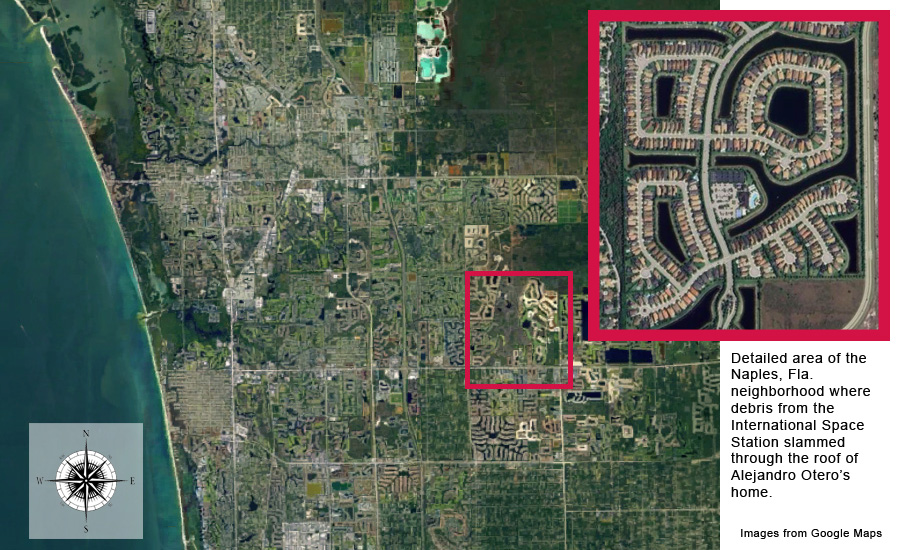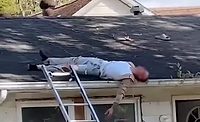What are the odds that debris from a man-made satellite could crash through the roof of an occupied house, particularly in only one of three states where NASA also has launch centers? The Otero family of Naples, Fla., will tell you this: it’s not zero.
Fragments left over after the removal of aging nickel hydride batteries from the International Space Station crashed into the South Florida home last March while its homeowner, Alejandro Otero, was on vacation. His son discovered the incident, which NASA confirmed to be from the ISS in April.
Last Friday, an attorney representing the family announced they are suing NASA for damages.
Mica Nguyen Worthy, a partner at Cranfill Sumner in Charlotte, N.C., who heads the firm’s Aviation Law Practice Group, said in a June 21 news release the lawsuit claims damages including non-insured property damage loss, business interruption damages, emotional/mental anguish damages and the costs for assistance from third parties required in the process.
“Space debris is a real and serious issue because of the increase in space traffic in recent years,” Worthy said in a press release. "My clients are seeking adequate compensation to account for the stress and impact that this event had on their lives … but a ‘near miss’ situation such as this could have been catastrophic; if the debris had hit a few feet in another direction, there could have been serious injury or a fatality.”

NASA said the batteries, weighing about 5,800 pounds, were jettisoned from the International Space Station in March 2021 during upgrades to the station. The agency believed the materials would burn up upon reentering Earth's atmosphere on March 8. However, some pieces of the nearly 3-ton hardware seemingly survived, crashing through the roof of the Otero home.
The Space Agency identified the debris as a stanchion used to mount the batteries on a cargo pallet. According to reports, NASA determined that the debris weighed 1.6 pounds, was four inches in height and was 1.6 inches in diameter. The agency also noted that thousands of pieces of debris orbit Earth and generally disintegrate after reentering Earth's atmosphere from intense heat and pressure.
"Components which do survive are most likely to fall into the oceans or other bodies of water or onto sparsely populated regions like the Canadian Tundra, the Australian Outback, or Siberia in the Russian Federation," NASA said. "During the past 50 years, an average of one cataloged piece of debris fell back to Earth [daily]; no serious injury or significant property damage caused by reentering debris has been confirmed."
The European Space Agency estimates the risk of a person being hit by space debris to be less than one in 100 billion people yearly. Yet, as Otero told WINK-TV shortly after the March 8 incident, a cylindrical object had “ripped through his ceiling” and tore up the flooring.
“I was shaking. I was completely in disbelief. What are the chances of something landing on my house with such force to cause so much damage,” Otero said. He added that his son was two rooms away from the point of impact.
The family’s attorney submitted the claim to NASA on May 22; the space agency has six months to respond.
The Otero’s saga is perhaps why a line in "To a Mouse," the 1785 poem by Robert Burns, remains as relevant today as when it was penned 239 years earlier: “The best-laid schemes o' mice and men.”







